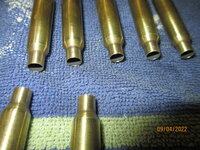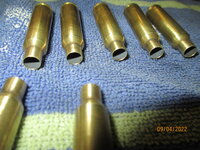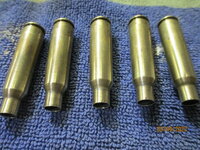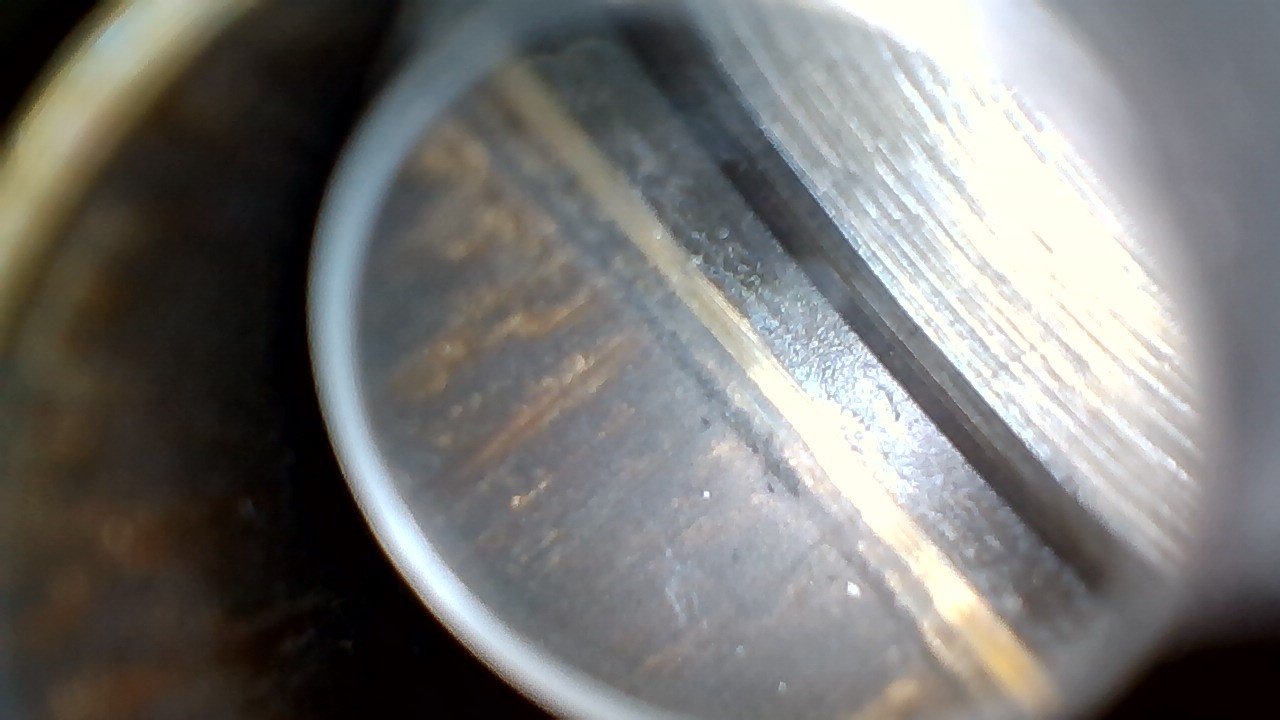cloverleaf
Handloader
- Sep 10, 2006
- 4,512
- 1,296
Thought I would pass this along. Pics of the cases below show cases now trimmed to 1.902. Prior to trimming thesse were at least 1.924. In the photos you can see what I can only guess is imprints of the rifling on these over length cases. They are not cracks If understand correctly, this could result in an over pressure situation. Note these cases have been reloaded many times. I wouldnt have seen this had I not taken some scotch bright to the shoulders/ neck. Others with more experience please comment. CL









